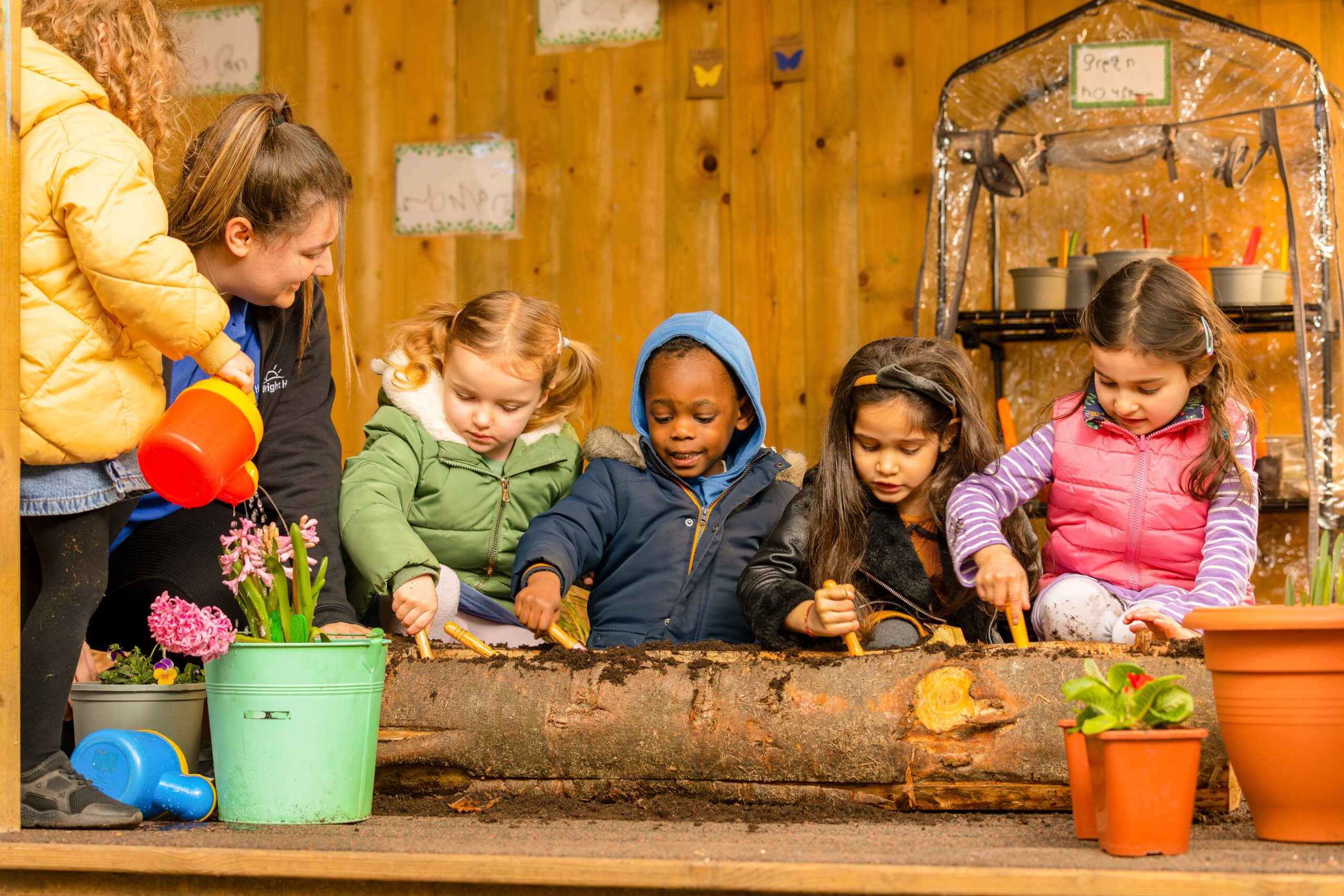National Children’s Gardening Week: Six Outdoor Activities to do with Young Children
It’s recommended that children aged 1-5 years have at least 180 minutes of physical activity per day according to gov.UK.
Being at one with nature in natural spaces such as woods, forests, and outdoor play spaces, supports emotional wellbeing. Engaging in mindfulness and being ‘in the moment’ is believed to help with children’s mental health and wellbeing.
Tara Yeandel, Garden Designer at Bright Horizons UK, enhances all Bright Horizons nurseries garden spaces to enrich children’s experiences through play and learning opportunities. This includes creating an environment for children to play with mud, water, sand and much more.
She said: “Our outdoor spaces are so important for children to be able to explore their imagination. It’s incredibly important for the children to learn and grow in confidence with an understanding of our environment and how they can help to protect our planet. When designing the nurseries gardens, I ensure there is plenty around to create a stimulating and nurturing atmosphere for the children, but also an eco-friendly area for our wildlife.”
The Bright Horizons wider Future Earth Agenda, aims to promote an engaging Early Years learning across their nurseries around sustainability and Connecting with Nature sessions.
In celebration of National Children’s Gardening Week, Tara has highlighted the six different activities you can enjoy outdoors with your young ones and the great benefits being outdoors can have for young children.
Places to Visit as A Family
To find ideas for places you might go and activities you may want to try with your family, visit your local parks and recreation website or the visitors’ centre of towns and cities near where you live. Look for things like public parks, woods, forests and trails, nature reserves, orchards, gardens, and wildlife parks.
Some shared activities to try
Have a scavenger hunt – You can try hiding some objects for your child to look for, or add a bit more challenge, for example, things that begin with the letter B, or something for each colour of the rainbow.
Do leaf or bark rubbings – All you need is paper, some chunky wax crayons (for little hands) and any new leaves you can find. Let the children find the ones they would like to use.
Dig in the soil – Find worms and bugs, make mud pies, and flip over rocks to see what you’ll find underneath. Have fun finding out the names of the bugs you find using non-fiction books or the internet.
Plant something – Purchase some wild flowers, herbs or vegetable seeds and start your own garden. It is important for children to learn about the life cycles of plants and living things, what they need to grow and encourage bees and other insects. Watch the progress of the seeds every day and talk about the different parts of the plants, e.g., shoots, roots, and leaves.
Get active- Play a game like twister or hopscotch, Simon Says, What’s the time Mr Wolf or Musical Statues. Test their listening and understanding skills. Let them take turns choosing and leading the games and get involved yourself. Children love when you play too!
Learn something new- Try yoga, mindfulness, or fishing. Dance alone in your room or out in the front yard. Why not make it social and invite friends’ round to join in the activities.
For more details on our passion for sustainability within our nurseries please visit here.

